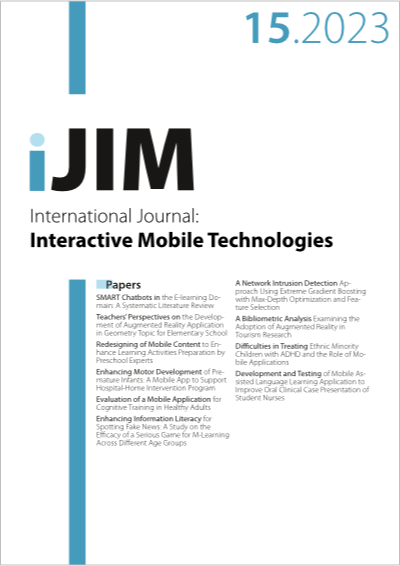Redesigning of Mobile Content to Enhance Learning Activities Preparation by Preschool Experts
DOI:
https://doi.org/10.3991/ijim.v17i15.39325Keywords:
Mobile technology, Nominal Group Technique (NGT), learning activities, preschool expert, Interpretive Structural Modelling (ISM)Abstract
Mobile content provision at the preschool stage has grown after the post-pandemic Covid-19.Preschool teachers face varying degrees of mobile technology literacy to prepare learningactivities that enhance children’s understanding and acquisition of knowledge and skills.Nevertheless, these teachers have minimal exposure and input to mobile content elementsthat can enhance learning. This study aims to redesign the mobile content model by redefiningthe required elements to improve learning activities preparation for preschoolers’basic problem-solving skills in mathematics. This case study involves seven preschool expertswhose data was collected using the Nominal Group Technique approach. Then, InterpretiveStructural Modelling was applied to develop the model through a voting process. The techniquewas used to rank the data from the experts before running the voting session. Thefindings revealed eleven principal elements for the mobile content model that can be dividedinto three content execution streams. The results offer several implications and benefitsto the mobile learning arena, particularly in early childhood education, due to its potentialto enhance engagement, interaction, and personalized learning experiences for younglearners. These outcomes provide insights into the best practices, strategies, and pedagogicalapproaches that can optimize the use of mobile devices in early childhood education, hence,promoting effective learning outcomes.
Downloads
Published
How to Cite
Issue
Section
License
Copyright (c) 2023 irwan mahazir ismail

This work is licensed under a Creative Commons Attribution 4.0 International License.


